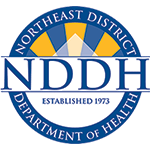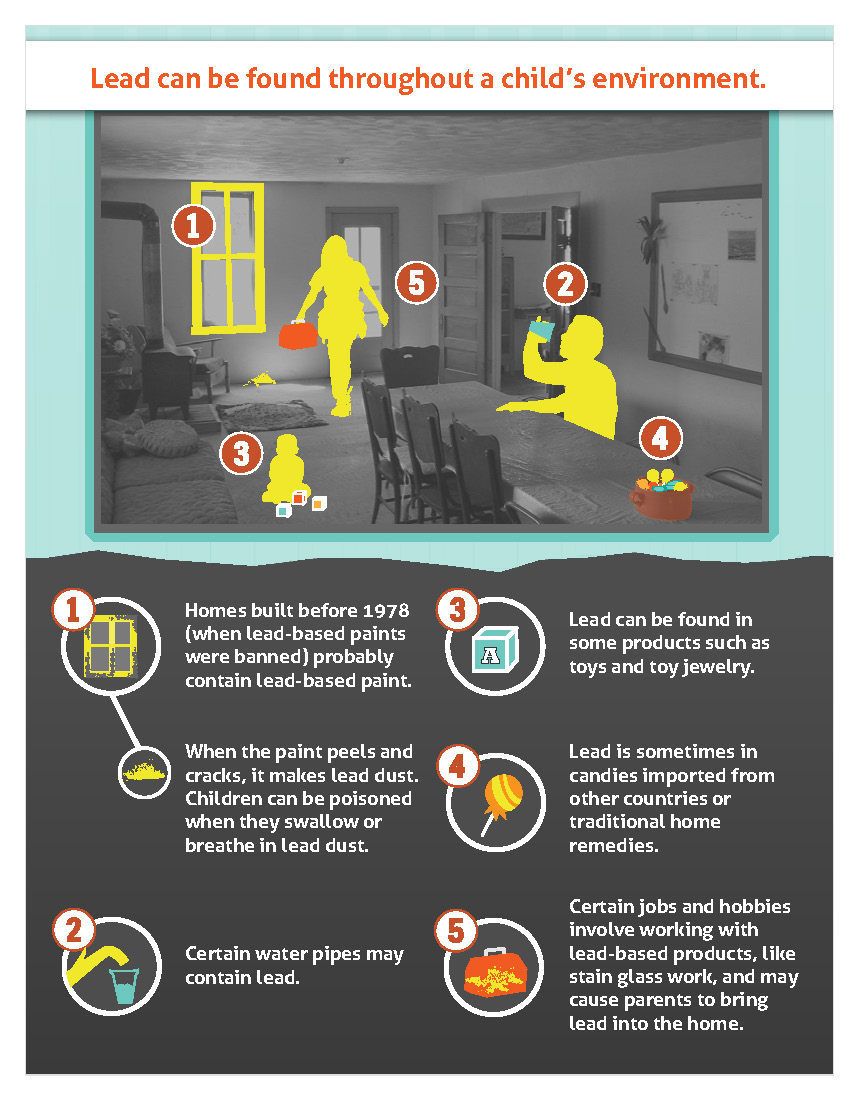Lead Poisoning Prevention
Exposure to lead can seriously harm a child’s health.
Lead Poisoning is 100% Preventable
What is Lead?
Lead is a metal found in our natural environment. Over time, it has been used in products such as paint, varnish, and gasoline. Due to its wide use, lead can be found in most of our communities.
What is Lead Poisoning?
Lead poisoning occurs when a detectable level of lead is found in the blood. There is no safe level of lead for any person, but it can be very harmful to children, pregnant woman or adults who have long-term exposure.
- Lead poisoning can cause brain damage, reduced IQ and attention span, learning disabilities, developmental delays, hearing loss, and other health problems such as seizures, coma and, in rare cases, death.
- Most childhood lead poisoning occurs when children swallow lead dust or lead paint chips.
- Lead poisoning is the most preventable childhood disease.
Primary Sources of Lead
The four primary ways that people are exposed to lead is:
- Lead-based paint
- Dust from lead-based paint
- Soil contaminated with lead
- Water contaminated with lead
Most childhood lead poisoning cases are caused by lead-based paint and lead dust in houses built before 1978.
Locations Where Lead is Most Likely Found Around the Home
- Doors
- Windows
- Porches
- Stairs
- Soil around the foundation of the home
Lead can also be found in non-environmental sources such as:
- Ayurvedics – remedies or medications used in some ethnic communities as part of their cultural traditions or treatment
- Cosmetics – products that are used as traditional make-up or for ceremonial or religious purposes
- Imported food and spices
- Jewelry
- Toys
- Clothing
- Occupational – can include painters, remodelers, contractors, construction workers, battery and metal recyclers, bridge workers
- Hobbies – can include pottery and ceramics, stained glass, fishing and firearm
Resources
Prevention
- Fact Sheet
- Healthy Homes Program
- Tips for Cleaning Lead Dust
- Reducing Lead Hazards at Home
- Preventing Lead Dust Inside & Out
- Preventing Prenatal Lead Exposure
- Seven Facts About Lead-Based Paint and Lead Dust
- Eating Right Helps Fight Lead Poisoning
Renovation and Repair
- LeadFreeCT
- EPA Renovate Right
- EPA Lead Safe Repair, Renovation, and Painting
- Renovation Infographic
- HUD, EPA, and CDC Lead Paint Safety Field Guide
- EPA Small Entity Compliance Guide
Other
Public Acts
Per CT State Statutes, NDDH is required to investigate and follow up on elevated blood lead levels in children under the age of six. Certain results may require epidemiological and environmental investigation.
Public Act 22-49: An Act Reducing Lead Poisoning
For more information on Lead Statutes and Regulations visit: Statutes and Regulations (ct.gov)



